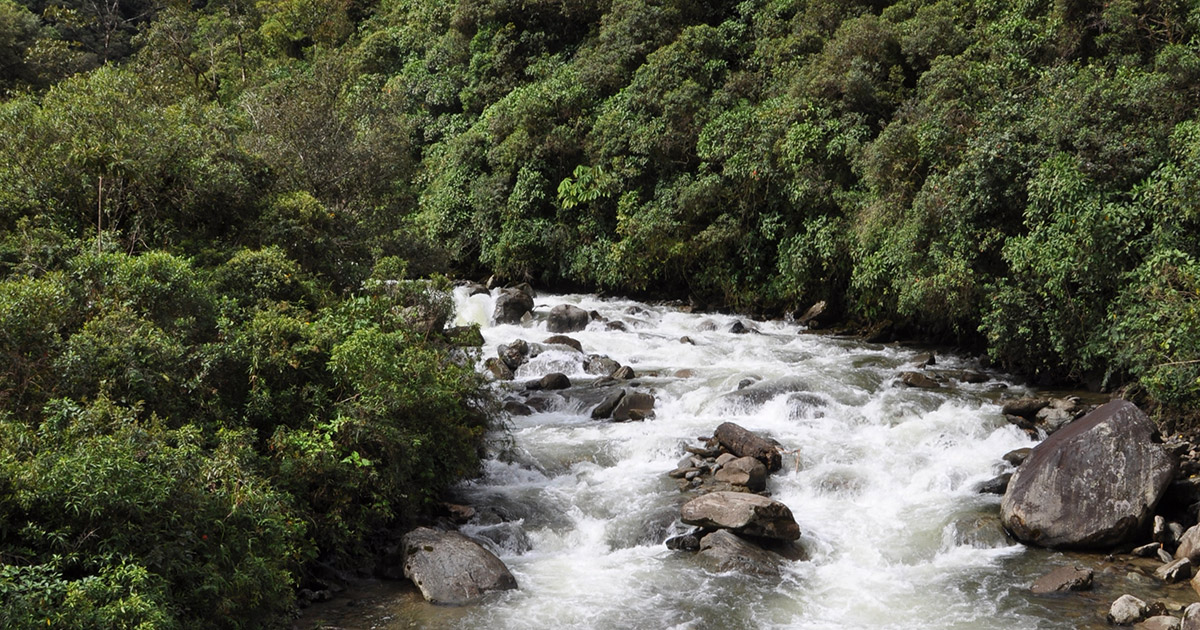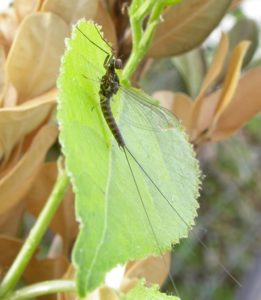
One of many mountain streams from which scientists collected insect communities to study biodiversity. Photo credit: Chris Funk
Adapted from an original story by Krishna Ramanujan, Cornell University
Lack of seasonal temperature variation in tropical mountains has led to species that are highly adapted to their narrow niches, creating the right conditions for new species to arise in these areas, according to a Nov. 5 study co-authored by Colorado State University scientists in Proceedings of the National Academy of Sciences (PNAS). Still, the same traits that make tropical mountains among the most biodiverse ecosystems on Earth also make the species that live there more vulnerable to rapid climate changes, the study finds.

by the research team to study biodiversity.
Credit: Boris Kondratieff
The multi-institutional study included researchers from CSU, Cornell University, University of Nebraska and Universidad San Francisco de Quito in Ecuador, and was funded by the National Science Foundation. CSU researchers included Chris Funk, LeRoy Poff, and Cameron Ghalambor, all professors in the Department of Biology; and Boris Kondratieff, professor in the Department of Bioagricultural Sciences and Pest Management. All four faculty members are also affiliated with CSU’s Graduate Degree Program in Ecology.
The PNAS study compared rates of evolution in three types of aquatic stream insects – mayflies (Ephemeroptera), stoneflies (Plecoptera), and caddisflies (Trichoptera) – in temperate and tropical mountain ranges. The findings have implications for similar patterns in other tropical mountain species.
“What we found is that reduced seasonality in temperature experienced by tropical stream insects has resulted in the evolution of narrow thermal tolerances, low dispersal rates, and ultimately, higher speciation and species diversity,” said Funk, who also serves as director of the Global Biodiversity Center in the School of Global Environmental Sustainability. “Moreover, the lower thermal tolerances of tropical insects suggest they might be less able to cope with increasing temperatures caused by climate change.”
Stream insects
Over a two-year period, CSU biologists headed teams that collected insect communities in streams every 200 meters of elevation changes in two mountain ranges: the Rockies in Colorado, and the Ecuadorian Andes. These samples were analyzed using modern genetic techniques to discover many new species. The researchers also performed experiments to determine how tolerant the insects are to warming temperatures.
The CSU team was responsible for determining the number of species of stream insects collected in Colorado and Ecuador, an effort led by former Ph.D. student Brian Gill, now a postdoctoral researcher at Brown University. Alisha Shah, also a former Ph.D. student and now a postdoc at University of Montana, led the characterization of thermal tolerance for the stream insects. Finally, former biology postdoc Nick Polato used genetic techniques to estimates the species’ dispersal patterns.

“Because the tropics are not as seasonal as the more northern temperate zones, bugs in the tropics can’t get too cold or too hot, and thus they have a narrow thermal breadth,” said co-author Kelly Zamudio, evolutionary biologist at Cornell University. “We also found that they move less up and down the side of the mountain, and there are more species [on tropical mountains] as a result. Nobody had tested all three of those patterns in the same system before.”
Low tolerance
Due to low tolerance for temperatures outside their narrow comfort zone, tropical mountain species don’t travel because changes in altitude quickly lead to temperatures to which they are not adapted. Lack of movement in turn limits gene flow and isolates individuals from adjacent populations. When populations are isolated over long time periods, genetic changes accumulate in the different populations, leading to the formation of new species.
Animals in temperate regions, on the other hand, are exposed to four seasons and thus are adapted to a broader range of temperatures. As they move up and down mountains and share genes more readily, their populations become homogenous and less diverse, the researchers found.
The findings support and reveal the mechanisms behind a classic 1967 paper that predicted these dynamics.
Future work could include testing to see if the same patterns exist for other mountain species, including terrestrial animals, as well as further predictions of which populations will be most endangered.
